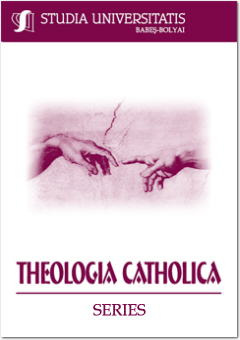BISERICĂ ŞI STAT ÎN MONARHIA DUNĂREANĂ (ÎN A DOUA JUMĂTATE A SECOLULUI AL XIX-LEA). CADRUL JURIDIC: PREVEDERI ŞI CONSECINŢE
CHURCH AND STATE IN THE MID-19TH CENTURY DANUBIAN MONARCHY. LEGAL FRAMEWORK: PROVISIONS AND CONSEQUENCES
Author(s): Ana Victoria SimaSubject(s): Christian Theology and Religion
Published by: Studia Universitatis Babes-Bolyai
Keywords: Modern history; Catholic church; Holy See; Austrian monarchy; ecclesiastical legislation; Transylvania; roumanian greek-catholic church; austrian concordat; Vienna nuncios; secularisation.
Summary/Abstract: Church and State in the mid-19th century Danubian Monarchy. Legal framework: provisions and consequences. The present study analyses from a historical and juridical point of view the evolution of Church-State relation inside the Danubian Monarchy, focusing mainly on the repercussions of a legislation advancing in its process of secularization upon the Catholic Church, in general, and the Greek-Catholic Curch in particular. The Church and the State confronted in the second half of the 19th century with the demarcation of their spheres of influence and power. Evolving, from alliance to separation, the relation between the Catholic Curch and State in Austria meant, as a matter of fact, the heading of an irreversible path. By its end, the Catholic Church ceased to by the old worldly power, becoming an emintently spiritual institution, situated at the edge of the society. From a church of state as it once used to be, changed itself in a certain confession, along the other confessions inside the empire. It was the result of some transfigurations which had started a long while ago, but which visible had accelerated in the second half of the 19th century. The starting point of thise aceelerated process was emphasized by the Concordat signed in 1855, between Austria and the Holy See, when the Catholic Church apparently recovered inside the monarchy its role of temporal power detained since the 18th century. In practice, the „restoration” was incomplete and for a short period of time. After only several years, the Concordat stopped as being recognised, first in Hungary (1867), and afterwards in Austria (1870). Its repudiation meant that the Church vertiginously sliped towards the edge of the society. The end of this path was underlined in Hungary by the institutionalization of compulsory civil marriage and of the ledger (1894), throughout which the State took the definitely control over marriage, as the last major fief belonging to the Church. Reduced in this way at the necessitous circle of a Sunday exercise, the only hope for the Church was to assume with conscientiousness her real vocation: the spiritual salvation.
Journal: Studia Universitatis Babes Bolyai - Theologia Catholica
- Issue Year: 55/2010
- Issue No: 2
- Page Range: 51-72
- Page Count: 22
- Language: Romanian

